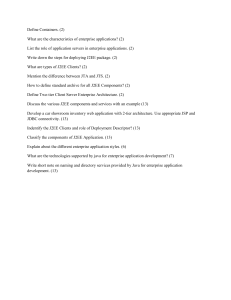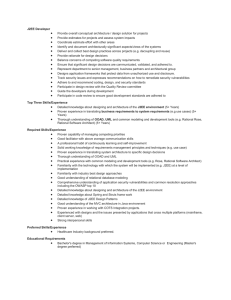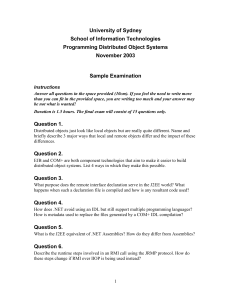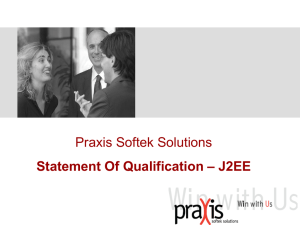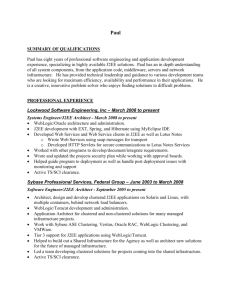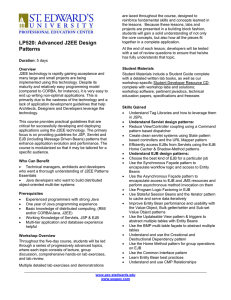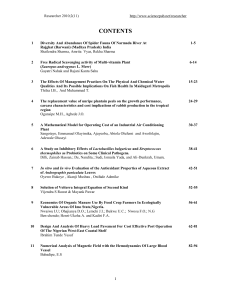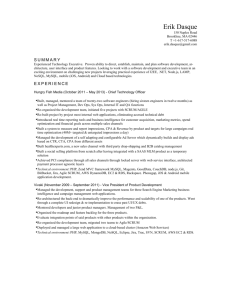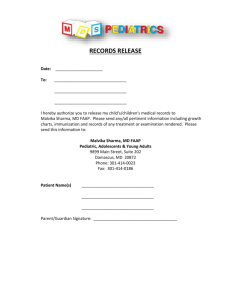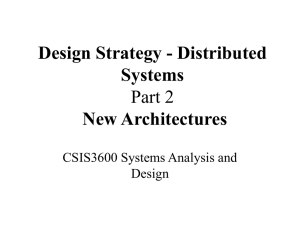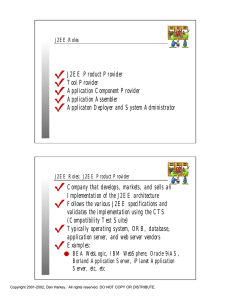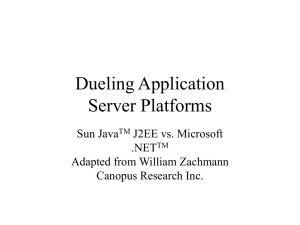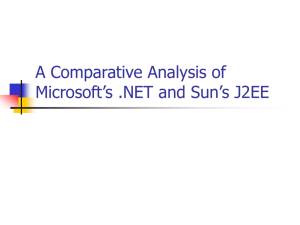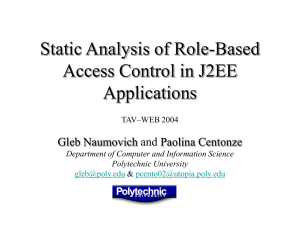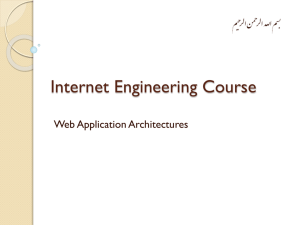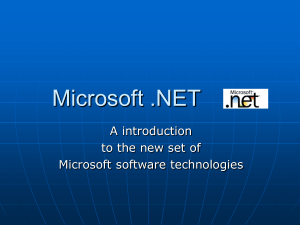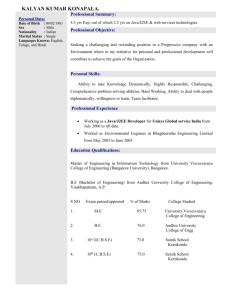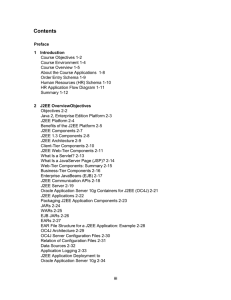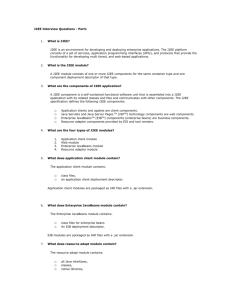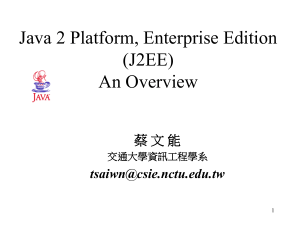E-Banking using J2EE Framework and Design Patterns
advertisement
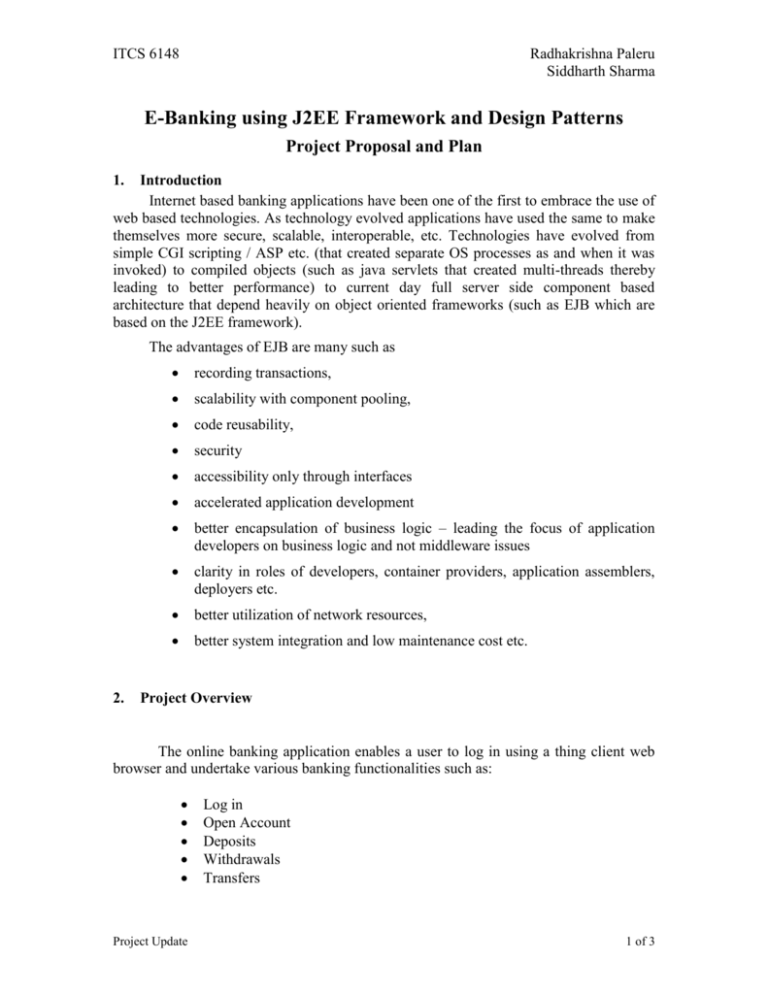
ITCS 6148 Radhakrishna Paleru Siddharth Sharma E-Banking using J2EE Framework and Design Patterns Project Proposal and Plan 1. Introduction Internet based banking applications have been one of the first to embrace the use of web based technologies. As technology evolved applications have used the same to make themselves more secure, scalable, interoperable, etc. Technologies have evolved from simple CGI scripting / ASP etc. (that created separate OS processes as and when it was invoked) to compiled objects (such as java servlets that created multi-threads thereby leading to better performance) to current day full server side component based architecture that depend heavily on object oriented frameworks (such as EJB which are based on the J2EE framework). The advantages of EJB are many such as 2. recording transactions, scalability with component pooling, code reusability, security accessibility only through interfaces accelerated application development better encapsulation of business logic – leading the focus of application developers on business logic and not middleware issues clarity in roles of developers, container providers, application assemblers, deployers etc. better utilization of network resources, better system integration and low maintenance cost etc. Project Overview The online banking application enables a user to log in using a thing client web browser and undertake various banking functionalities such as: Project Update Log in Open Account Deposits Withdrawals Transfers 1 of 3 ITCS 6148 Radhakrishna Paleru Siddharth Sharma View account summary Log out The banking application would use pure java distributed server side computing technologies such as JSP, EJB, JNDI, Java API, of J2EE framework. The choice of technologies is based on various advantages of the J2EE framework listed above. 3. Scope of Work Apart following: 4. from achieving the above functionalities we propose to implements the Design patterns Software metrics J2EE framework Data persistence through stateful session EJB objects Application architecture using UML Explore possibilities for Aspect Oriented Programming in transaction logging (time and resource permitting) Resources 4.1 People 1. Radhakrishna Paleru 2. Siddharth Sharma 4.2 Hardware and Software Resources The hardware resources for the project are as follows: Server - Intel-Pentium 4 machine with 2GHz CPU and 512MB RAM capable of running a full J2EE application server Client – PC with minimum capability to act as a thin client The main software resources to be utilized for the project include the following (and are not available in the university computing environment). Substantial efforts have been made to deploy the J2EE application server (purely open source) on notebook PCs: J2EE application server (JBoss 1.4) Tomcat 5.0 (Integrated on JBoss) Apache ANT XDoclet Log4J Microsoft Windows XP OS J2SDKEE 1.4 Project Update 2 of 3 ITCS 6148 5. Radhakrishna Paleru Siddharth Sharma Current Status Tasks Completed JBoss Application Server Tomcat Servlet Engine Apache ANT build tool XDoclet attribute oriented programming tool Log4J for xdoclet logging Implemented both Stateless and Stateful Session Bean Examples Under Progress: Application Design and Coding Future Scope: Application coding Deployment Testing Documentation Presentation Project Update 3 of 3
